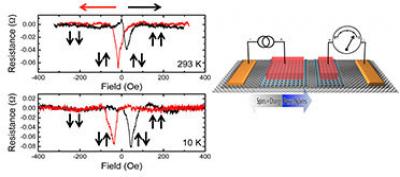Researchers discover that pure-spin current is possible in insulators
Researchers from the US DoE's Argonne National Laboratory discovered that a pure-spin current can be created in materials that are insulators. Previously it was thought that such a current is possible in magnetic materials only.

The researchers generated a magnetic field on a layer of ferromagnetic YIG (yttrium iron garnet) on a substrate of paramagnetic GGG (gadolinium gallium garnet). To their surprise, the spin current was stronger in the GGG than it was in the YIG. They actually do not know how this works - and understanding it is the next step in their research.
